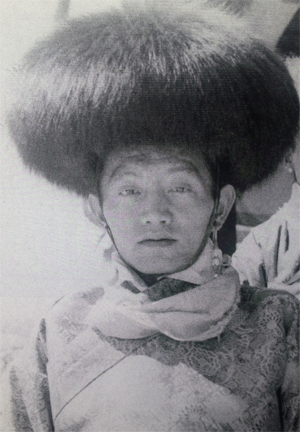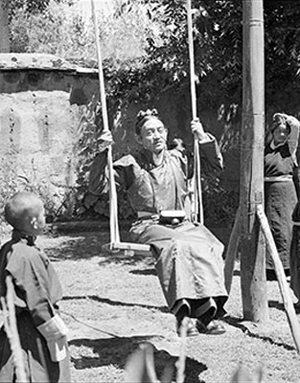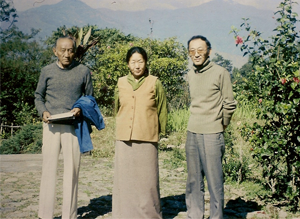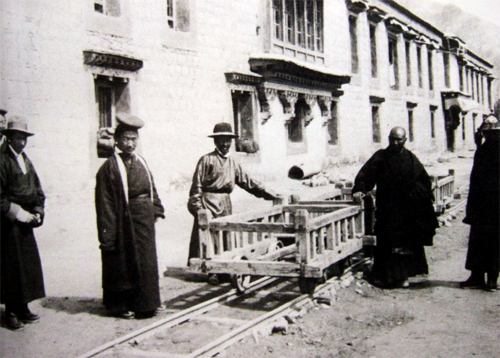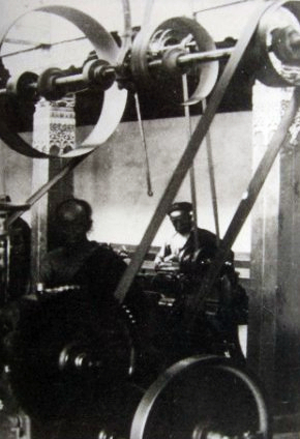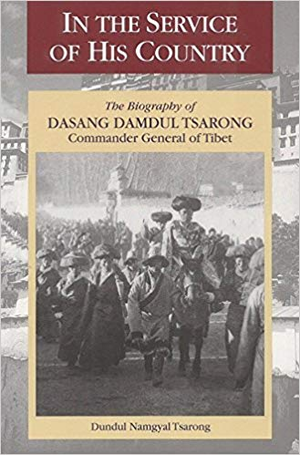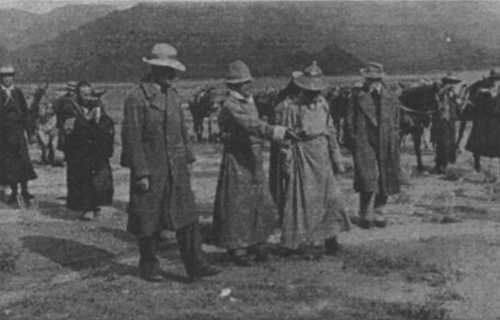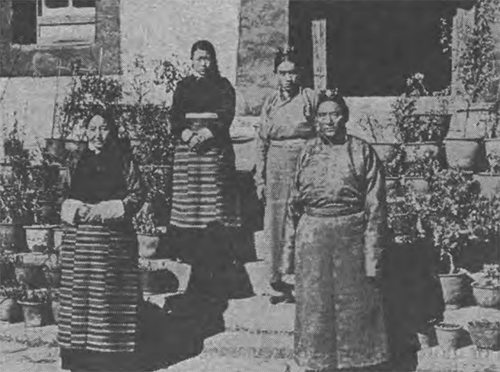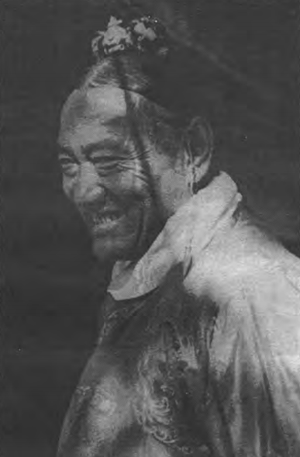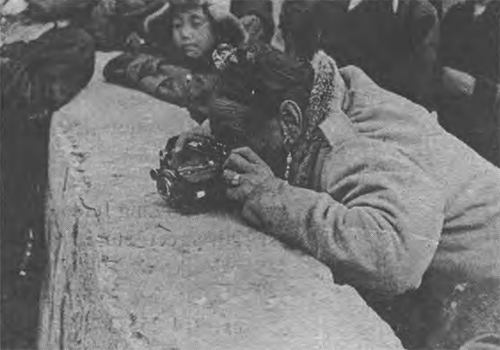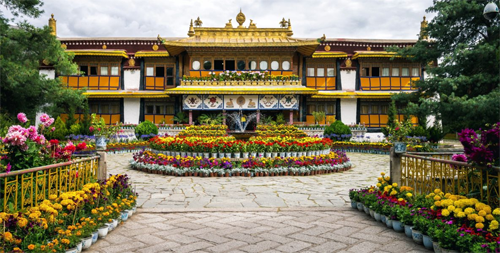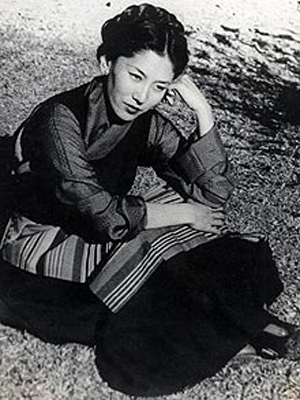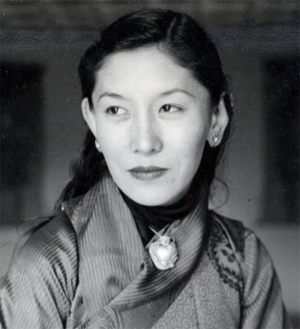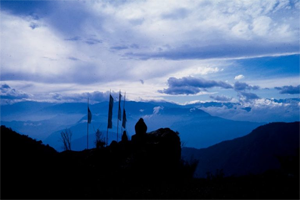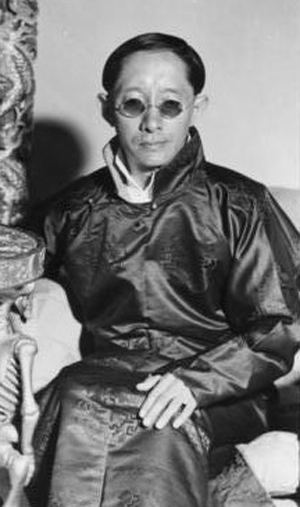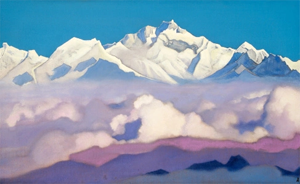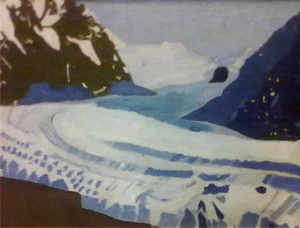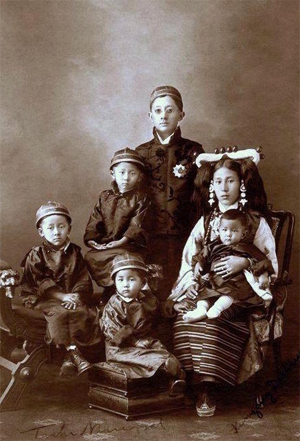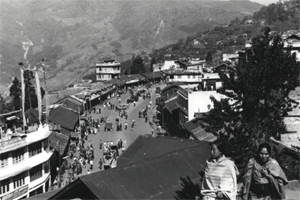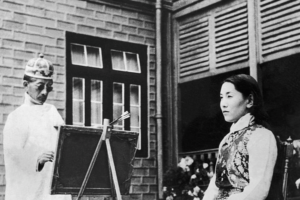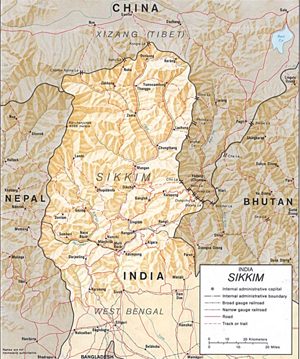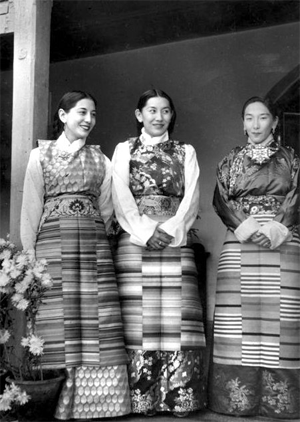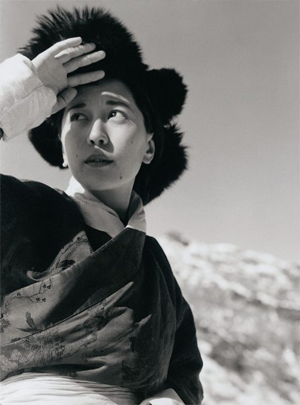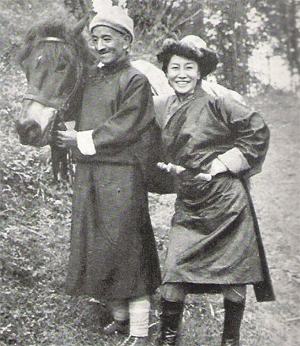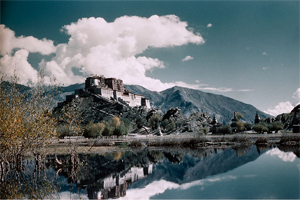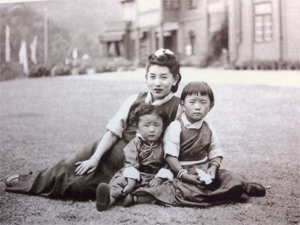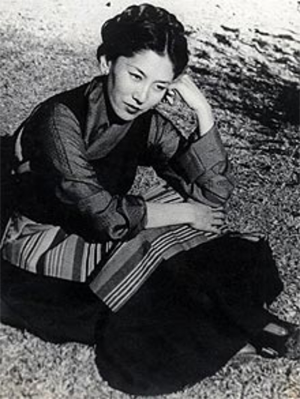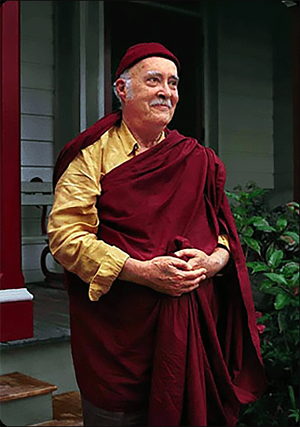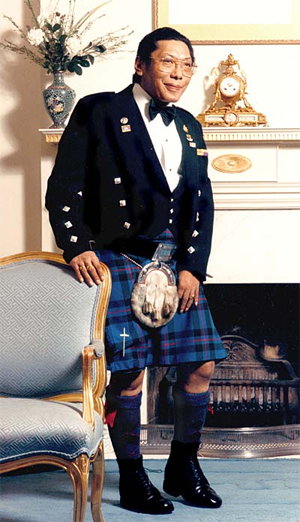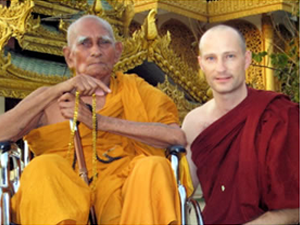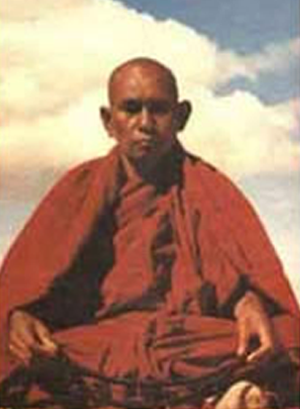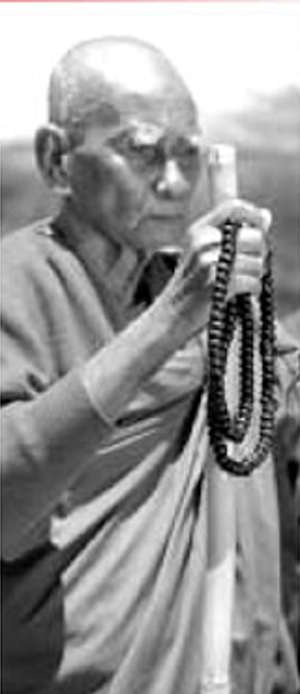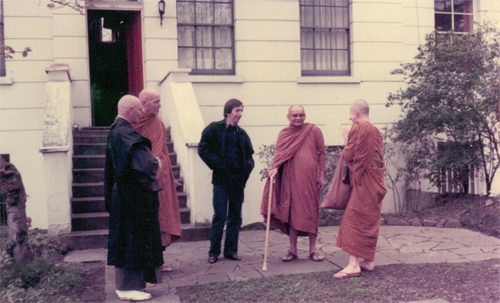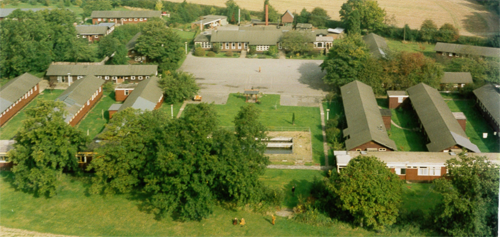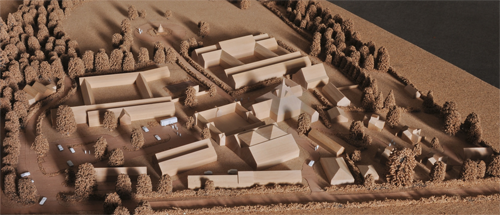Part 2 of 2
It quickly becomes clear that Tibet can not expect international support. A UN General Assembly in New York opposes intervention. The US, in its global crusade against communism, is content to equip and train underground Tibetan freedom fighters. A dedicated group around Thubten Jigme Norbu, the eldest brother of the XIVth Dalai Lama, is offered concrete support from the CIA to shape the Tibetan resistance.
Coocoola begins to act as a messenger of secret messages between Delhi, Calcutta and Lhasa. Their CIA contact is Larry Dalley, whose mission is to gather news from the Chumbi Valley and Sikkim. A salary promised by Dalley rejects them indignantly. In addition, Coocoola is working on a way to smuggle Lee Enfield ammunition placed in pineapple and peach jars into the still fortified monasteries of Tibet.The job of negotiating with the Indians went to the prince's son and heir apparent, Palden Thondup. Commonly known as the maharaja kumar, or crown prince, he was a relative newcomer to politics. Recognized at birth as the reincarnation of his late uncle, he appeared destined for a monastic life. But after the untimely death of his elder brother during World War II, he suddenly moved up the succession ladder and was thrust into government service.
Charming and well educated -- he had spent time at a British college -- the crown prince quickly assumed all governing responsibilities from his father. In 1947, he ventured to New Delhi to initiate talks with the Indian government. Through force of personality, he was able to win a three-year stay on any decision about Sikkim's integration into the republic. In early 1950, he again ventured to New Delhi. If anything, his audience had grown more fickle in the interim. The previous year, the Indian government had granted generous autonomy to the neighboring kingdom of Bhutan, and it was reluctant to make concessions to yet another Himalayan territory.
Undeterred, the crown prince, then only twenty-seven years old, persisted with a convincing legal pitch that the special privileges extended by the British set Sikkim apart from the other princely states. The result was a December treaty whereby the protectorate of Sikkim was free to manage domestic matters but allowed India to regulate its foreign affairs, defense, and trade.
The Sikkimese royals saw leeway in this pact. Though prohibited from making independent foreign policy, they believed that it was still within their right to retain a degree of international personality. This held obvious appeal for the United States, which appreciated Sikkim's unique perspective on Himalayan events, on account of its royals being related by blood and marriage to the elite in neighboring Bhutan and Tibet. But it also meant walking a fine diplomatic tightrope, as American contact with the Sikkimese ran the risk of agitating India. In the spring of 1951, the U.S. consulate in Calcutta gingerly tested the waters. The Chinese had already invaded Kham, and Larry Dalley, a young CIA officer who had arrived in the city the previous fall under cover of vice consul, was eager to collect good intelligence on events across the border. He knew that two members of Sikkim's royal family frequented Calcutta and would be good sources of information.
The first, Pema Tseudeun, was the older sister of the crown prince. Popularly known by the name Kukula, she was the stunning, urbane archetype of a Himalayan princess. Her contact with American officials actually dated back to 1942, when she had been in Lhasa as the teenage wife of a Tibetan nobleman. OSS officers Tolstoy and Dolan had just arrived in the Tibetan capital that December and were preparing to present a gift from President Franklin Roosevelt to the young Dalai Lama. The gift was in a plain box, and the two Americans were scrambling to find suitable wrapping. "I came forward," she recalls, "and donated the bright red ribbon in my hair." [7]For the next eight years, Kukula had it good. Married into the powerful Phunkang family (her father-in-law was a cabinet official), she now had considerable holdings in Lhasa. After the Chinese invasion of Kham, however, all was in jeopardy. Leaving many of her possessions back in Tibet, she fled to the safety of Sikkim. There she became a close adviser to the crown prince, accompanying her brother to New Delhi that December to finalize their state's treaty with India.
The second royal in Calcutta, Pema Choki, was Kukula's younger sister. Better known as Princess Kula, she was every bit as beautiful and sophisticated as her sibling. Kula was also married to a Tibetan of high status; her father-in-Iaw, Yutok Dzaza, had been a ranking official at the trade mission in Kalimpong. Both Kukula and Kula were regulars on the Indian diplomatic circuit. "They came to many of the consulate's social functions," remembers Nicholas Thacher, "and were known for their ability to perform all of the latest dance numbers." [8]
Not all of that contact, CIA officer Dalley determined, was social. After arranging for a meeting with Princess Kukula at his apartment, he asked her if she thought the Tibetans might need anything during their current crisis. Kukula suggested that they could use ammunition and said that she would bring a sample of what they needed to their next meeting. True to her word, the princess appeared at Dalley's apartment bearing a round for a British Lee-Enfield rifle. She also mentioned that waves of Tibetan traders came to India almost quarterly to get treatment for venereal disease (a scourge in Tibet) and to pick up food shipments for import. Particularly popular at the time were tins of New Zealand fruits packed in heavy syrup.
Based on this information, Dalley devised a plan to substitute bullets for the fruit. He went as far as pouching Kukula's bullet and a sample tin label to CIA headquarters -- all to no avail. "They laughed at the scheme," he recalls. [9]
Later that spring, the U.S. consulate in Calcutta again turned to the Sikkimese royals for help. At the time, the Dalai Lama was holed up in the border town of Yatung, and CIA officer Robert Linn was brainstorming ways of facilitating indirect contact with the monarch. Two of those he asked to assist in passing notes were Kukula and Kula. Although the Tibetan leader ultimately elected not to go into exile, it was not for want of trying on the part of the princesses. [10]
One year later, Sikkim's royals once more proved their willingness to help. In June 1952, Kukula approached the consulate with an oral message from the Dalai Lama. She had just returned from a visit to her in-laws in Lhasa, and although she had not personally seen the Dalai Lama, she had been given information from Kula's father-in-Iaw, Yutok Dzaza, who had been in Lhasa at the same time, circulating among senior government circles. [11] Kukula quoted the Dalai Lama as saying that when the time was propitious for liberation, he hoped the United States would give material aid and moral support. Kukula also passed observations about food shortages in Lhasa and about the desperate conditions of the vast majority of Chinese troops in that city. [12]
To maintain the flow of such useful information, the consulate continued its discreet courtship of the Sikkimese sisters. Part of the task fell to Gary Soulen, the ranking Foreign Service officer in Calcutta. In September 1952, Soulen obtained Indian approval to visit Sikkim for a nature trek. Venturing as far as the Natu pass on the Tibetan frontier, Princess Kukula accompanied him on the trip and imparted more anecdotes about the situation in Lhasa. [13]
CIA officials, too, were looking to make inroads. Kenneth Millian, who replaced Larry Dalley in October 1952 under cover as vice consul, counted the Sikkimese as one of his primary targets. By that time, however, the Indians were doing everything in their power to obstruct contact. On one of the rare occasions when he got permission to visit the Sikkimese capital of Gangtok, for example, New Delhi leaked a false report to the press that the American vice president -- not vice consul -- was scheduled to make an appearance. As a result, entire villages turned out expecting to see Richard Nixon. "Discreet contact," lamented Millian, "became all but impossible." [14]
Occasional trysts with the Sikkimese were conducted by another CIA officer in Calcutta, John Turner. Born of American parents in India, Turner spent his formative years attending school in Darjeeling. He then went to college in the United States, followed by a stint in the army and induction into the agency in 1948. For his first overseas CIA assignment, he was chosen in May 1952 to succeed Robert Linn as the senior CIA officer in Calcutta. Given his cultural background and fluency in Hindi, Turner was well suited for the job. "I felt very much at home," he later commented.
The Sikkimese, Turner found, needed no prompting to maintain contact "They offered us tidbits of intelligence to try and influence U.S. policy," he concluded. "They were never on the payroll; they were not that sort of people." Some of the best tidbits came from the crown prince himself. "He was not the kind of person comfortable in dark alleys," quipped Turner. "He would make open, official visits to the consulate, and was the guest of honor with the consul general." [15]
As an aside to these visits, the prince would pass Turner relevant information about Tibet. One such meeting took place in the spring of 1954 immediately after the crown prince's return from a trip to Lhasa. While in the Tibetan capital, the prince had spoken with the Dalai lama, whom he found unhappy but resigned to his fate. Even more revealing, the Chinese had feted their Sikkimese guest by showing off their new Damshung airfield north of Lhasa and had motored him along a fresh stretch of road leading into Kham. Turner found the debriefing so informative that he recorded the entire session and sent a voluminous report back to Washington. [16]
-- The CIA's Secret War in Tibet, by Kenneth Conboy and James Morrison
For some time, this secret activity, a work of the night, becomes an outlet for despair over the destruction of their Tibetan homeland.
During the day, she takes care of the thousands of refugees from Tibet as chairwoman of the Relief and Rehabilitation Committee of Sikkim. The camp is being financed by the first Indian Prime Minister, Pandit Jawaharlal Nehru, an old friend of the royal family of Sikkim. For more than ten years, Coocoola has been visiting the camp near Gangtok on a regular basis to organize the bare essentials - food, medicines, blankets and tents - and to talk and listen to each and every one of their displaced, often sick compatriots.
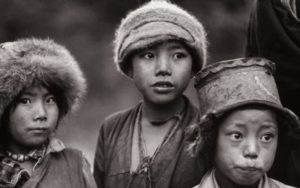 Tibetan children in a camp for refugees; Gangtok, circa 1960. Photo: LIFE
Tibetan children in a camp for refugees; Gangtok, circa 1960. Photo: LIFEBut the political independence of Coocoola's first home, Sikkim, it is anything but good since the withdrawal of the British from India: After the Indian independence of 1947, the old kingdom Sikkim is again self-employed, but already in 1950 Chögyal Tashi of Forced India to sign a treaty again, otherwise Sikkim would be forcibly annexed. For defense and foreign policy should be responsible from now on India. The currency will continue to trade the Indian rupee. De jure Sikkim remains a sovereign state, de facto but an Indian protectorate and a buffer to the mighty China, which after the incorporation of Tibet now also after the former Tibetan crown country Sikkim switched - as an exotic-exquisite dessert.
In the 1950s, Coocoola spends most of her time in Gangtok and Calcutta (now Kolkata), the city of millions in West Bengal, whose huge, blue-green bay spills the two Himalayan rivers Ganges and Brahmaputra. Also in Calcutta, she learns gemstone design and founds a company for importing Iranian turquoise with Kula. The turquoise stone is one of the most important gemstones of the Tibetan women. Thus, it combines business sense with cultural struggle for survival: The Tibetan culture has been in great danger since the Chinese invaded.
Nehru presents Coocoola with a state pension, which she gratefully rejects. Instead, it asks for trading rights and gemstone import licenses, which it resells to watchmakers. Through the success of her business, she not only earns a lot of money, but also the respect of the State Bank of Sikkim, whose board she will join in later years. For wealth, she has a distance at arm's length: "Money did not make me - I made money. (Money did not make me - I made money) ".
In Calcutta, she soon has a particularly cool air-conditioned apartment with large brown armchairs, valuable chests of drawers, Thankas (wall hangings with motifs from the gods' heaven of Tibet) and family silver. Her aristocratic status is emphasized by golden crockery and cutlery, which is exclusively reserved for her at table. Their nobility is given by the gods. She embodies her with every fiber and does not even make anyone doubt it for a moment. Whenever Coocoola receives guests, as is often the case, they serve the finest wines in massive decanters and delicacies. Cool Jazz, Nat King Cole, Eartha Kitt, Winifred Atwell, and Chuck Berry revolve around their precious wood Philco turntable.
She is popular among Indian businessmen, European travelers and American diplomats as a generous host of fun parties. At these parties Sikkim and his threatened independence is often an issue. It is now important to anchor the country and the culture of Sikkim in the international consciousness, and thus to preserve the monarchical position of the Namgyal family. Coocoola feels this vocation even more than her already indispensable older brother Thondup, the crown prince.
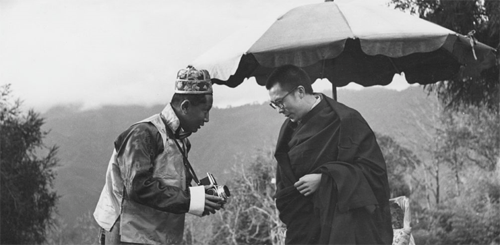 Coocoola's brother, Palden Thondup, Crown Prince of Sikkim (l.) And Tenzin Gyatso, the XIV. Dalai Lama after his escape from Tibet, Gangtok, April 1959. Photo: LIFE / KeystoneConcretely, in Gangtok, with the help of friendly and kindred clerics of the monasteries Pemayangtse and Rumtek, a place where the documentation and exploration of the Tibetan culture in Sikkim and its approximately 70 Buddhist monasteries is in good hands and should be made accessible to the public: The Namgyal Institute of Tibetology. The foundation stone for the building was laid in February 1957 by the Dalai Lama, and the inauguration speech in October 1958 was held by India's Prime Minister Nehru.
Coocoola's brother, Palden Thondup, Crown Prince of Sikkim (l.) And Tenzin Gyatso, the XIV. Dalai Lama after his escape from Tibet, Gangtok, April 1959. Photo: LIFE / KeystoneConcretely, in Gangtok, with the help of friendly and kindred clerics of the monasteries Pemayangtse and Rumtek, a place where the documentation and exploration of the Tibetan culture in Sikkim and its approximately 70 Buddhist monasteries is in good hands and should be made accessible to the public: The Namgyal Institute of Tibetology. The foundation stone for the building was laid in February 1957 by the Dalai Lama, and the inauguration speech in October 1958 was held by India's Prime Minister Nehru.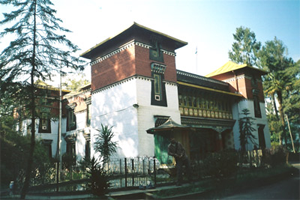 The Namgyal Institute houses the writings of Mahayana Buddhism, an extensive (now partially digitized) photo archive and religious objects.Coocoola manages to find some rare Tibetan manuscripts and copies as a contribution to the library, including the legend of King Gesar of Ling and the unabridged biography of Drukpa Künley (a holy fool, poet, and tantric yogi who helped around 1500) to spread Buddhism in Bhutan, blithely attributing to beer and women)
The Namgyal Institute houses the writings of Mahayana Buddhism, an extensive (now partially digitized) photo archive and religious objects.Coocoola manages to find some rare Tibetan manuscripts and copies as a contribution to the library, including the legend of King Gesar of Ling and the unabridged biography of Drukpa Künley (a holy fool, poet, and tantric yogi who helped around 1500) to spread Buddhism in Bhutan, blithely attributing to beer and women), in all its explicit frivolity, as noted in a jubilee publication of the institute: "After purchasing this book, the number of visitors to the library rose sharply."
But even on diplomatic paths Coocoola tries to preserve Sikkim's independence. She acts and urges corridors of power in the US Consulate of Calcutta and in Delhi.
It would not be far-fetched to say that Princess Coocoola is something like the foreign minister and minister of culture of her small Himalayan country. In Delhi, she restores the Sikkim House and gives it a new lease of life.
In his analysis Beijing versus Delhi (1963), George Patterson remembers Coocoola as "an extremely attractive lady who likes to run politics in the style of 18th-century French marquises. Her considerable charm and her high-level friends are constantly coming up with new and unexpected strategies to further sharpen the already confused current situation in Sikkim. "
Nehru mentions in a military correspondence the strategically important position of the Chumbi valley beyond Nathu-La for an expansionist China, describing it as a dagger heading southwest, into the heart of India, and urgently needs to be defused. Nehru, who always has a protective hand over Sikkim's independence, dies in 1964. Although his daughter Indira Gandhi (India's Prime Minister from 1966) was also a frequent guest in Gangtok in her youth, the protective hand of the mother country encompasses the little kingdom of year to year firmer.
The Indian garrisons in the geopolitical hotspot Sikkim multiply in the course of the sixties, also because China's intervention in the East Pakistan conflict is to be expected, which ultimately does not happen. But in 1962, shots are fired on Nathu-La, and China begins a furious destruction of Tibet's indigenous culture, leading to new wave-of-escapes from Tibet to Sikkim and India. This is the grim era of the Cultural Revolution, which Fosco Maraini later describes as "the years of fire and shit."
At the same time, the Kingdom of Sikkim loses stability from within. First, by the mass influx of strong, willing workers from India and from neighboring Nepal, which has long been keeping an eye on Sikkim to settle it as part of a postulated Gorkhaland.
The population of the Nepalese in Sikkim, with about 200,000 inhabitants, is growing in comparison to the other tribes of the Tibetan Denjongpka (Buthia) and Lepcha and reaches about 75% in 1966. Nepali is already the most widely spoken language in Sikkim. The individuality and identity of the country is therefore not only questionable from an outside perspective.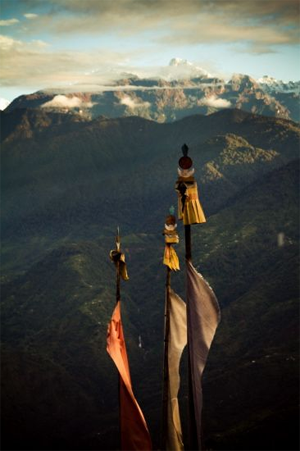 Sikkim's mountain world with Buddhist flagpoles (Lungta Dharchok). Photo: Desmond DoigThere is also a growing socialist and anti-monarchist movement that, starting from Kalimpong, infiltrates Sikkim. The thread-pullers behind are the Kazi (Minister) and his wife, the Kazini of Chakung. He, a patriotic provincial politician of the National Congress Party; she, a fox-fur-covered troubadour and a journalist of Scottish descent, said to have drunk in Burma with George Orwell Gin.
Sikkim's mountain world with Buddhist flagpoles (Lungta Dharchok). Photo: Desmond DoigThere is also a growing socialist and anti-monarchist movement that, starting from Kalimpong, infiltrates Sikkim. The thread-pullers behind are the Kazi (Minister) and his wife, the Kazini of Chakung. He, a patriotic provincial politician of the National Congress Party; she, a fox-fur-covered troubadour and a journalist of Scottish descent, said to have drunk in Burma with George Orwell Gin.
With a sharp pen and pronounced hatred for the house of Namgyal, the Kazini already sees herself as the first lady of an independent Sikkim, without the theocratic ramblings of a 16th-century Tibetan "slave-driver family". In her column for the Himalayan Observer, she sneers at Thondup (and is said to have much more reason to scoff at him soon) and addresses Coocoola exclusively as Mrs. Phönkhang. A natural hostility is born.
The rumors spread by the Kazini and their intrigues about the Indian intelligence service are slowly eroding the support of the Buddhist royal house by the people of Sikkim, which increasingly consists of Hindus. Thondup has known since his youth that he has received bad fate cards, which does not stop him from trying to turn the tables with perseverance, willpower, gallows humor and moments of real confidence.
In December 1963, the painting monarch, Tashi Namgyal dies. Until last, the dying king remains calm and asks everyone in the room, including the doctors, for their well-being. It is Coocoola who remains with the Father until his last breath, making sure that all rituals are kept to ensure a well-protected onward journey of his soul.
In the same year,
Thondup marries the young American oriental student and high-society debutante Hope Cooke, whom he met at the cheap Windamere Hotel in Darjeeling. She noticed him for her auburn hair, her extra-long eyelids and her Austrian dirndl dress. Thondup is sure to have found in her a worthy prince consort. It was not until 1965 that he ascended the throne of Sikkim - the astrologers advised him against it from an earlier date. From his first marriage to the Tibetan Samyo Kusho Sangideki, who died in 1957, Thondup brings two sons and a daughter into the compound. In 1965 Hope becomes the mother of a boy, followed three years later by a daughter. It is a marriage that encounters mixed reactions in the family environment.
While Hope starts a big friendship with Kula, she has a much harder time at Coocoola. Coocoola knows that the last thing Sikkim's need for the stumbling monarchy now is a dreamy, chronically whispering New York City twentieth. Of course she would never say that. And although her Hope as a person is not unpleasant, sometimes she cannot help but show her cruel side.
Right at the beginning of her entry into Gangtok, Hope Cooke passes a mishap. Since she is not as used to alcohol as her celebrating prince, she gives it all away in the lobby of the palace. When Hope apologizes profoundly the next day, Coocoola takes her by both hands and says in a silky voice, "Oh, do not worry, Hope-La. Behave yourself as if you were at home with you. "
Hope does not know if she should take the words seriously or evaluate them as passive aggression: "I had no idea what to answer. 'No, I never surrender in my own house, only in the houses of other people'? I was petrified and could not pull my hands away. "From then on Hope can only step closer to her sister-in-law, taking Valium.
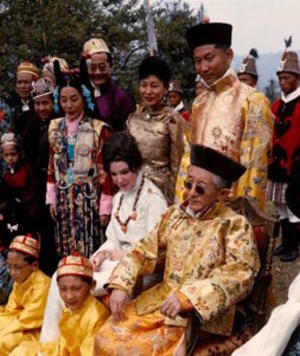 Wedding in the Himalayas: Hope Cooke in white, from left to right: Kula, Coocoola, Thondup and sitting, Chögyal Tashi Namgyal. On the ground, sons Thondup, Wangchuk and Tenzing. Photo: National Geographic
Wedding in the Himalayas: Hope Cooke in white, from left to right: Kula, Coocoola, Thondup and sitting, Chögyal Tashi Namgyal. On the ground, sons Thondup, Wangchuk and Tenzing. Photo: National GeographicIn her cleverly and intelligibly written autobiography Time Change (1980), Hope Cooke writes about Coocoola: "She is often sweet to me, but I do not know if she is only to love her brother. I suspect she sees me as an eccentric beatnik, possibly even an adventurer. I am in awe of her for several reasons; First, she is so gorgeous and sophisticated that I often feel like a tramp next to her. Although she never says harm, she is sometimes full of anger - hard and sparkling like a diamond. (...) But she's definitely a fantastic woman. "
In March 1963, Thondup and Hope marry in an internationally sensational ceremony that is causing a furore in magazines (LIFE, National Geographic, Le Monde, etc.) around the world under the media-driven motto "American Himalayan Queen." At the wedding, Coocoola, dressed in beehive and gold lamé, is causing a sensation, and may have made her prostrations too dramatic before the new Queen Sikkims.
But it does not take long for the two so different women to join forces to jointly spread Sikkim's cultural identity into the world. Sikkim's participation in international craft fairs and exhibitions for traditional garments from around the world, as well as an interview Coocoola gives to BBC Radio during a London 1967 visit, raise the profile of their homeland in the race for political reassurance.
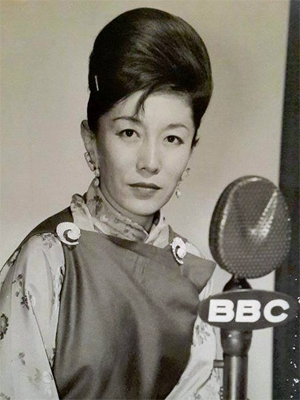 Princess Coocoola, 1967, in London.
Princess Coocoola, 1967, in London.With a US-American woman in the Gangtok Palace, the tiny country is gaining an exposure on the international stage, but the expansive politics of Indira Gandhi and the totalitarian communist rule of the Chinese in Tibet increase the pressure in the domestic pressure cooker Sikkim. The writing Kazini in Kalimpong has a fresh target for their poisonous tirades against the monarchical status of Sikkim with the "imported queen of Manhattan".
But even for personally Coocoola breaks with the end of the sixties a hard time. In 1969, her sister Kula succumbs to a tumor at just 43 years old.
In 1973, Coocoola's husband dies and she becomes ill with a creeping circulatory disorder in her left arm, probably caused by smoking since early youth. After a quacking surgery, her left hand has to be amputated, which has far-reaching effects on the self-image of this beautiful, elegant woman.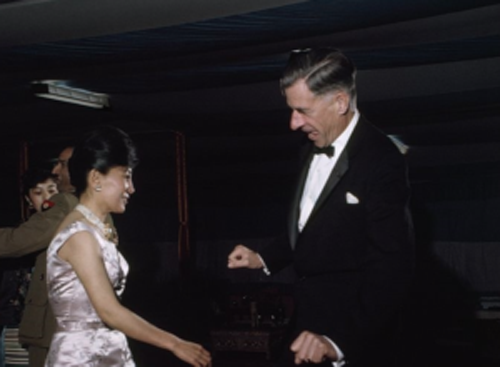 Twist of Fate: Coocoola and John Kenneth Galbraith at a party around 1963. Galbraith was an advisor to President Kennedy and a diplomat of the highest order. Photo: Letizia Battaglia / National Geographic
Twist of Fate: Coocoola and John Kenneth Galbraith at a party around 1963. Galbraith was an advisor to President Kennedy and a diplomat of the highest order. Photo: Letizia Battaglia / National GeographicIn the early 1970s, political pressure in Sikkim has grown to such an extent that the Indian Intelligence work (bribery organized riots, roadblocks, and strikes) is just another step toward the Indian military.
Coocoola, in Hong Kong just to get shopping for her second daughter's wedding, calls for a spontaneous press conference blaming Indira Gandhi and especially a BIS official, Tejpal Singh, for the riot in Gangtok.
For a long time, the diplomatically networked Coocoola has created enemies in the Indian news service. Kayatyani Shanker Bajpaj, the penultimate Dewan (an Indian political officer) of Sikkim calls her "The Dragon Lady." Finally, Coocoola's bungalow, which had been her and her family's refuge since fleeing Tibet, is being confiscated by the Indian authorities. Her trusted lieutenant and messenger, Thupten Geley, is intercepted in Gangtok, interrogated and thrown into a West Bengal jail without trial.
At the beginning of April 1975, Coocoola systematically searched her flat in Calcutta; all doors and drawers are equipped with mysterious, star-shaped wax seals. On her next visit to Delhi, she is interrogated by the IIB for two hours and placed under house arrest at Sikkim House for a week - while the Indian army overwhelms the sparse bodyguard of the Gangtok Palace. All eleven telephone connections to Sikkim House are - little wonder - cut off. Meanwhile, her brother Thondup is being arrested and besieged by Hope and the children in the palace.
On 16 April 1975, the Chögyal is disempowered by a referendum and Sikkim incorporated as the 22nd state in the Indian Union. Hope and her two children manage to leave Sikkim, apparently to make one of their many visits to New York - only this time she will not come back. Through Thondup's numerous affairs, the relationship of the two is in the end anyway. Alone, Thondup remains behind - a disempowered monarch and functioning alcoholic.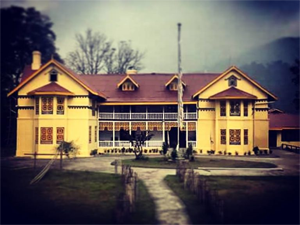 The royal palace of Gangtok.
The royal palace of Gangtok.He spends full-bearded and fat, spending several more months in the palace, where he spends his time mowing lawns and playing football before settling for Calcutta. As if the tragedy were not enough, his eldest son Tenzing dies in 1978 at the age of only 26 in a car accident. Thus, a chöla (firstborn son) of Namgyal is extinguished again. In 1982, Palden Thondup Namgyal, the twelfth and final king of Sikkim, dies in a New York hospital - a good man with a difficult fate.
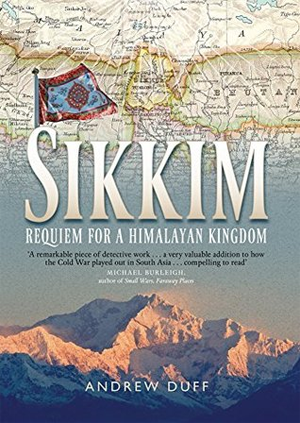 The most accurate and entertaining review of Sikkim's last years as a kingdom: Andrew Duff ::: Sikkim - Requiem For A Himalayan Kingdom ; Birlinn Ltd., Edinburgh, 2015.It seems the fulfillment of a prophecy or a curse, as Coocoola says in an interview about her family: "In Tibet, the vernacular calls such a curse 'Sih' . Its effectiveness is generated by black magic. After that, he must be cleverly hidden.
The most accurate and entertaining review of Sikkim's last years as a kingdom: Andrew Duff ::: Sikkim - Requiem For A Himalayan Kingdom ; Birlinn Ltd., Edinburgh, 2015.It seems the fulfillment of a prophecy or a curse, as Coocoola says in an interview about her family: "In Tibet, the vernacular calls such a curse 'Sih' . Its effectiveness is generated by black magic. After that, he must be cleverly hidden.
You can put the Sih on someone's shoe or on an object in his house. Once this is done, you must nourish the curse, hatch through complicated rituals and mantras - and when mature, bring them to full development. But such a sih is not just a burden on our family."Coocoola retires after the annexation of Sikkim in a cottage near Gangtok. It could be speculated on whether she could have maintained Sikkim's independence as a regent - would the monarchical system have allowed a ruler. But it might have been eliminated by military forces if it had taken a more powerful position in this political game of power.
It continues to receive scholars, Himalayan researchers, diplomats and journalists, and remains attentive to events in the world until the age of 84.
Swiss Tibetologist Dr. Anna Balikci-Denjongpa has the opportunity to win the friendship of the elderly Coocoola and to work with her at the Namgyal Institute of Tibetology. When the work on an ethnological book on Sikkim is completed, the princess does not miss the opportunity to open a bottle of champagne to celebrate.
On December 2, 2008, Coocoola dies in Calcutta. On the morning of their dusk, four earthquakes are felt in the mountains of Sikkim, which is interpreted as a sign of the departure of a significant soul. At the cremation on Lukshyama Hill, the resting place of the Namgyal, they accompany members of all Gangtok ethnic and social groups to say goodbye to a consort of the gods and a brave Dharma warrior whose big wheel keeps turning.
Like the wheel of time, which will not settle until all kingdoms have fallen to the heart, all destinies will have been fulfilled, and the universe will dissolve into stardust, like a cosmic mandala. Until then, on clear winter days, the Kangchendzönga continues to tower in all its heavenly splendor over the dark green hills of Sikkim and disappears behind white clouds during monsoon.
 BONUSOrigin legend of the Tibetan people
BONUSOrigin legend of the Tibetan peopleGods love to change to other forms, not just the classical legends of ancient Greece, the Native American tales, and the cosmic chaos household of Hinduism.
As in the Tibetan founding legend: Behind the two wild creatures of the monkey and the demon hide namely the bashful Chenrezig, Bodhisattva of compassion (in his Sanskrit form also called Avalokiteshvara) and his - even - better half Jetsün Dölma. Dölma is also known as Tara and is worshiped by Buddhists in all its 21 expressions, colors and powers.
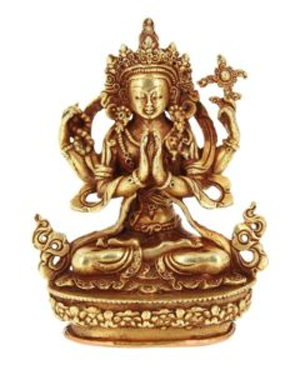 Chenrezig, or Avalokiteshvara, the bodhisattva of compassion.
Chenrezig, or Avalokiteshvara, the bodhisattva of compassion.When not in the guise of a demon wrapped in raging wispy clouds and raving on mountain peaks, Dölma is a rather reserved, practical deity, merciful, full of love for her loved ones and proud of her femininity: As a mocking monk once advises her, the next To be born again as a man, for only in this way can one obtain the last enlightenment, does she swear from then on to reincarnate only as a female being.
When the Buddha of Compassion and the Goddess of Goodness meet on the Tibetan Plateau, both are already high spirits, yet unredeemed. A threefold rainbow is formed between their bodies and they look deeply into each other's eyes. And so that they do not need to be ashamed of each other in their exemplary purity as holy beings, one lets out the monkey and the other the demoness. We know the feeling.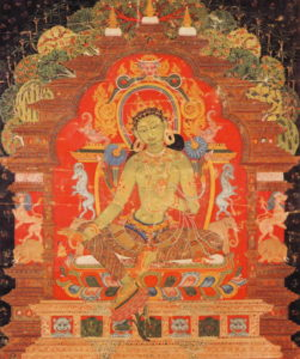 Incarnation of feminine intuition: the green tara (thangka from the 13th century, Tibet).Since it can still take until Nirvana, they not only agree to play heavenly love games and have six children with each other, but also to beget a whole people. However, although the monkey and the demon take care of their offspring, this one denies both monkey and demon food. Even that is not unknown to today's human parents.
Incarnation of feminine intuition: the green tara (thangka from the 13th century, Tibet).Since it can still take until Nirvana, they not only agree to play heavenly love games and have six children with each other, but also to beget a whole people. However, although the monkey and the demon take care of their offspring, this one denies both monkey and demon food. Even that is not unknown to today's human parents.
Only when suddenly a field full of highland barley sprouts from the raw earth and the ears change into tsampa flour, the hunger of the children can be satisfied. From now on, the children of the monkey and the demon are true Tibetans.Sources and literature:Thomas Laird ::: The Story of Tibet
Melvyn Goldstein ::: A History of Modern Tibet
Tsering Yangdzon ::: The Aristocratic Families in Tibetan History 1900 - 1951
David L. Snell Grove, Hugh Richardson ::: A Cultural History of Tibet
Hugh Richardson ::: High Peaks, Pure Earth
Fosco Maraini ::: Secret Tibet
Heinrich Harrer ::: Seven Years in Tibet
Heinrich Harrer ::: The Old Lhasa - Pictures from Tibet
Heinrich Harrer ::: My Life
Martin Brauen (Hrsg.): :: Peter Aufschnaiter - His Life in Tibet
Jan Boon ::: Where the Wind Prays
Günter O. Dyhrenfurth ::: The book by the Kantsch
René de Nebesky-Wojkowitz ::: Oracles and Demons of Tibet
JR Subba ::: History, Culture & Customs of Sikkim
Anna Balikci-Denjongpa ::: Lamas, Shaman and Ancestors
Brajbir Saran ::: The Sikkim Saga
Nari Rustomji ::: Enchanted Frontiers
Nari Rustomji ::: Sikkim, a Himalayan Tragedy
Marco Pallis ::: Sikkim
Marco Pallis ::: Peaks and Lamas
Sangharakshita ::: Facing Mount Kanchenjunga
HH the XIV Dalai Lama ::: Freedom in Exile
Namgyal Lhamo Taklha ::: Born in Lhasa
Dasang Dandul Tsarong ::: In the Service of His Country
Sunanda K. Datta-Ray ::: Smash & Grave: Annexation of Sikkim
Andrew Duff ::: Sikkim - Requiem for a Himalayan Kingdom
Hope Cooke ::: Time Change
VP Menon ::: Sikkim's Story of Integration
George N. Patterson ::: Beijing vs Delhi
Charles A. Bell ::: Manual of Colloquial Tibetan
Patrick French ::: Tibet, Tibet
Jaroslav Poncar, John Keay ::: Tibet - Gateway to Heaven
Magazines and magazines:The Telegraph
The
Himalayan Observer
National Geographic India (March 1963)
Life
websites:Phayul
Tibetan Who's Who
Treasury of Lives
The Royal Forum
The Diplomat
Literary Review
Bulletin of Tibetology
Namgyal Institute of Tibetology
